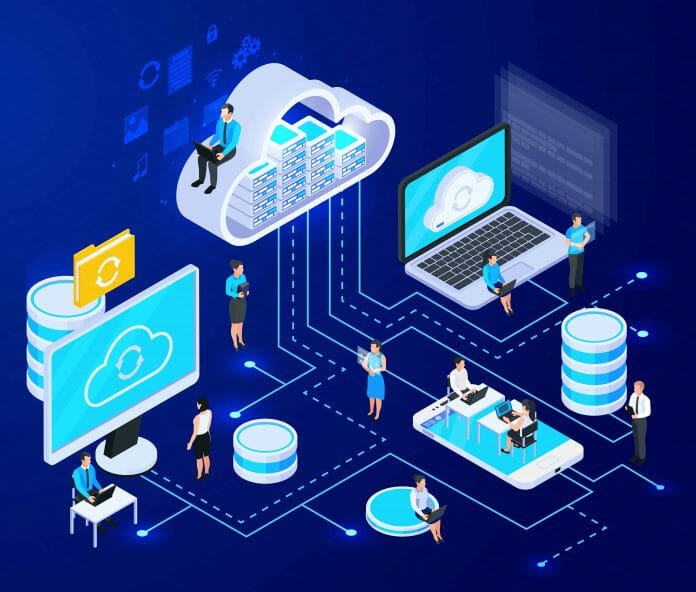
By Geoff Soon, Managing Director of South Asia, Snowflake,
Many organisations are in the process of discovering the most productive way to store, unify and, mobilise data effectively. Snowflake estimates that there are still hundreds of millions of data sets isolated in cloud data storage and on-premises data centres globally. The Data Cloud eliminates these silos, allowing organisations to seamlessly unify, analyse, and share data to reach deeper insights and even open new revenue streams.
As this shift to the Data Cloud, what data analytics trends will emerge?
Here are 10 predictions about what to expect in 2021 in areas including data science, data engineering, data governance, and data sharing that can help unlock the value of data faster and more efficiently.
Trend #1: The value of data will rise exponentially
According to an April 2020 report from EY, the value of data will increase exponentially due to growing mobile data traffic, cloud-computing traffic, and the burgeoning development and adoption of technologies including IoT and AI.
Data—both internal and third-party—has become critical to the creation of insights that help ensure business survival and competitiveness. The key to unlocking the value of data will be the ability to easily unify, integrate, analyse, and share it in the cloud.
In addition, a Gartner report revealed that organisations that promote data sharing will outperform their peers on most business value metrics by 2023.
Trend #2: The rise of the Data Cloud
Many IT leaders point to data silos as the biggest challenge to realising the value of their data. These repositories that are neither integrated nor connected may lead to a slew of issues, including possible duplication of data as well as a lack of transparency, efficiency, and productivity.
The Data Cloud is one unified environment where teams can collaborate on all sorts of data, bringing many different workloads together in a secure, governed manner. The need to copy or move data will become a thing of the past, helping to eliminate many security and governance issues.
Trend #3: Modernisation beyond the data warehouse
Achieving a complete view of data requires modernising not just your technology, but also your processes and workforce. Leading companies will build new approaches to data by creating new roles and responsibilities, enabling organisations to be agile for changing requirements.
Trend #4: Governance continues to be a top concern
As more data is shared and businesses face more privacy regulations, governance must be pervasive. Governance involves knowing your data (understanding and classifying data across your entire ecosystem), unifying security and governance (simplifying governance across workloads with centralised controls), and controlling your data (implementing flexible governance and security policies that don’t hinder innovation).
According to a report from the World Economic Forum, governance issues must be addressed in order to unleash the full potential of data for development. Gartner also predicts that only 20 percent of organisations investing in information governance will succeed in scaling governance for digital business by 2022.
Trend #5: So long, data lakes/warehouses
Gone are the days when organisations needed to figure out locations and data types for data lakes versus data warehouses, and how to integrate different solutions and systems. Today, the Data Cloud enables a holistic approach, enabling companies to focus on the value of data instead of the logistics of its storage and usage.
Trend #6: Collaboration goes mainstream
It’s very difficult, if not impossible, for disparate teams to collaborate on data. It is often necessary to create copies of databases, or offload data sets, and send them outside of the organisation. This creates operational overhead and a massive governance problem, because the second you transfer data to a third party, you lose control of it. Companies are increasingly using data clouds and data marketplaces to collaborate on data in virtually any format, at near-unlimited scale, without copying or moving it.
A Gartner article states that the traditional “don’t share data unless” mindset has outlived its original purpose and must be reversed to an approach of “must share data unless.”
Trend #7: Analytics democratisation becomes attainable
Today, organisations are empowering every employee in every department with access to self-service analytics. This is being enabled by easy and governed access to ready-to-use data along with scalable platforms that can handle the workloads, easy-to-use visual analytics tools that can answer questions in near real time, and an increased focus on improving data literacy.
Trend #8: Data processing is available to all
Multiple users can access the same platform to process data for different purposes, including data preparation, data augmentation, feature engineering, and machine learning. As engineers use a more diverse set of languages and tools, data architectures are becoming more complex. The Data Cloud reduces complexity, enabling all users to process data differently according to their needs.
Trend #9: Every app becomes a data app
Today’s applications ingest, process, and encode massive amounts of data, no matter which category they are in. The challenge is to make sure data infrastructures can handle the huge data loads and user expectations for rapid response times. The Data Cloud can support data-intensive applications without the cost and complexity of legacy data systems.
Trend #10: A single platform for data becomes the solution
Companies that want to bring the capabilities of advanced analytics to their employees can take a tool-based approach and perform complex integrations, but this approach becomes labour-intensive and costly. A single platform such as Snowflake enables multiple workloads in one place—including data engineering, data science, data sharing, data applications, data warehousing, and data lakes—helping to unlock value faster and easier.
Data is fundamental to creating efficient business operations, discovering new revenue opportunities, and delivering exceptional customer experiences. Yesterday’s tools for acquiring, storing, and sharing data have not kept up with today’s burgeoning demands. Data is growing in volume and diversity, taxing the limits of the applications and workloads that depend on it, from simple reporting and data visualisation apps to advanced machine learning algorithms. The Data Cloud is a unified, pervasive set of services that houses all your data and puts it to work, securely and consistently.








